Pacific 'Raleigh' 6-valve - a beautiful mongrel
Posts: 134
Threads: 11
Joined: Jul 2015
City: Christchurch, New Zealand
Found this completely by accident over the weekend - Some of you might be aware of the Pacific spiral dial radio I'm slowly restoring, others might have seen the popular but extremely rare Pacific 'Elite' art deco console (looks like two triangles joined at their tops) - this is another popular New Zealand made Pacific set from the mid-30's... They made some great radios (or, truth be told, commissioned some great cabinets and added great chassis' from other manufacturers - but hey, they are nice radios).
[Image: http://i241.photobucket.com/albums/ff222...2cx3if.jpg]
I've wanted one for a long time and this one just fell into my lap... I ended up paying over double what he wanted for it - because he sold me a few other radios for good prices and because I felt this was worth at least what I wanted to pay, but well more than he wanted. Call me mad, but I just couldn't steal it and then enjoy it.
[Image: http://i241.photobucket.com/albums/ff222...5nrqsr.jpg]
Unfortunately, it wasn't until I was looking at it in the car and thought, "6V6GT output tube, what the?..."
[Image: http://i241.photobucket.com/albums/ff222...vbtr9y.jpg]
The chassis looks right, but it looks wrong. The badging on the chassis looks correct for the era, and the dial / knobs line up - but the actual chassis itself looks like its from a radio nearly 10 years newer. I have no idea whats going on there yet - it certainly doesn't match the valve layout label.
[Image: http://i241.photobucket.com/albums/ff222...rtmjq0.jpg]
My initial thoughts are that I might (if I can find another collector with one to copy) scratch-build a chassis using this one for the badge and other mid-30's radio chassis I have for parts. Since it has a chrome speaker ring I'm thinking a chrome chassis would suit it too. Its a 6 valve with similar lineup to the Airline 62-316 I'm restoring so if I can't find schematic details then that would make a good reference point to copy from.
[Image: http://i241.photobucket.com/albums/ff222...rqbmr6.jpg]
I wonder if this is when it received its transplant?
[Image: http://i241.photobucket.com/albums/ff222...rc4ctl.png]
All-in-all I'm very happy with it, even if its going to need some work to make it 'right'.
There are no personal problems that can't be overcome with the liberal application of high explosives
Posts: 246
Threads: 27
Joined: Aug 2013
City: Petaluma, CA
That I really like because of that unique design! Nice to have the little repair tag from 1949. That's a great, unexpected find. Congrats! I'm sure not too many survived.
Craig R.
Posts: 3,102
Threads: 54
Joined: Apr 2011
City: Lexington, KY
John KK4ZLF
Lexington, KY
"illegitimis non carborundum"
Posts: 5,000
Threads: 267
Joined: Nov 2012
City: Bandon
State, Province, Country: OR
Posts: 4,603
Threads: 50
Joined: Sep 2008
City: Sandwick, BC, CA
Since you say that the New Zealand made Pacific sets used chassis made by other manufacturers maybe this was a later production set where they updated the chassis to use octal tubes? I have a Canadian Dominion Electrohome built Serenader set where the service literature gives two tube lineups, one uses an 80, a 42, a 75, a 6A7, and two 6D6s, the other uses octal equivalents except for the rectifier which is still an 80. Since most of these New Zealand manufacturers were no doubt small, even by Canadian standards, they probably forgot to change the tube chart on the inside, even Philco messed that up once in a while when they had two different models sharing the same cabinet. Then again the ad mentions that the Raleigh model was offered with either a "Four Valve" or a "Five Valve" chassis, the tube chart shows six tubes and says "Six Valves", how many tubes are in the chassis you have?
Regards
Arran
(This post was last modified: 03-23-2016, 03:46 AM by Arran.)
Posts: 1,447
Threads: 96
Joined: Jul 2012
City: Poughkeepsie, N.Y.
Nice find indeed! Let us know how she plays after tour done restoring it. I like it!
Posts: 134
Threads: 11
Joined: Jul 2015
City: Christchurch, New Zealand
Thanks guys - and the mystery deepens, but maybe things are a little clearer... I will need to bounce this off a few people in the know here in NZ.
[Image: http://i241.photobucket.com/albums/ff222...xtf9ej.jpg]
The chassis is originally from a 'farm set' - given the tag on the back. I ignored this because it all looked wrong - but the radio is most likely from Central Otago - a remote (by NZ standards) gold-mining and farming area back in the day... they never got mains power until very late in the piece, so its possible that the service tag was modifying the radio for the new fandangled 'lecy-tricle wires that they got. The 2V filament setup is gone, a power transformer added - and then a second one for a 5Y3 underneath - the chassis has been cut up to accommodate this. New sockets have also been fitted, rather shabbily it seems. Add to this that the IF cans are not a good fit either - so they might have been replaced.
[Image: http://i241.photobucket.com/albums/ff222...ip3qkf.jpg]
[Image: http://i241.photobucket.com/albums/ff222...cmvmsa.jpg]
So, it could indeed be a standard tag for the cabinet, with a farm set chassis fitted (I'll look into the chassis that were available in that era from Radio Corp NZ and see what might fit). That chassis has then been heavily modified to suit mains at a time when more modern tubes would have been available to replace the old battery ones.
[Image: http://i241.photobucket.com/albums/ff222...swqylt.jpg]
I'm thinking at this point I will probably strip the chassis and rebuild it again properly as a 6-valve mains set, following the Columbus model 18 circuit but the Pacific chassis layout because they are pretty close and its likely a variant of this that the Pacific sets had. This is likely the best I will be able to do unless I magically stumble upon a Pacific chassis - but the likelihood of that is very slim... and if I do then I can swap them out when that happens.
[Image: http://i241.photobucket.com/albums/ff222...lqjvph.png]
Columbus model 18 circuit
[Image: http://i241.photobucket.com/albums/ff222...anfxpa.png]
Columbus model 18 chassis
There are no personal problems that can't be overcome with the liberal application of high explosives
Posts: 134
Threads: 11
Joined: Jul 2015
City: Christchurch, New Zealand
Quick update, the Columbus 7B1 battery set ( http://www.radiomuseum.org/r/columbus_7b1.html) from that era has a sensitive/economy switch in the schematic... its possible other sets did too. I'm not sure how many valves this had now... I'll know more when I can start pulling things apart... which I shouldn't do right now... so I probably will.
There are no personal problems that can't be overcome with the liberal application of high explosives
Posts: 134
Threads: 11
Joined: Jul 2015
City: Christchurch, New Zealand
And something else - the 7B1 schematic shows a permanent magnet speaker - which was rare for the time. This set contains a very early Rola permanent magnet speaker that I thought had been retrofitted, but I now think it was there from the start and used to lower battery drain by not having to run up an electromagnetic field.
[Image: http://i241.photobucket.com/albums/ff222...tmppsy.jpg]
I expect there was room for 7 valves on this chassis when the electrolytics are taken out - in fact one of them looks like it was mounted inside a valve shield base on the chassis.
Here is the schematic:
[Image: http://i241.photobucket.com/albums/ff222...usvoaf.png]
So now I need to decide if I put it back to the battery set I suspect it may have been from factory or do I build it as what most of them were - which will also be much more useful to me - a 6-valve mains set. Its been bastardized at least once in its life, and the chassis is damaged in ways that might not be easily rectified, so my gut feeling is that while its nice to figure out its heritage, it will be a better set and in no way diminished by undoing the mess and converting it sympathetically and as correctly as possible. And I'm pretty sure I have enough vintage RCNZ chassis parts laying about to achieve this. Its certainly the way I'm leaning at present but I'm also very interested in the idea of a battery set.
Having said that, a thought just occured to me - I have a sneaky suspicion that I might have a 1935ish RCNZ battery set somewhere in a different brand (Courtenay). I'll head out to my storage space later today and have a look-see...
And in case this is all getting confusing - Radio Corp of NZ (no relation to RCA) produced chassis' that they sold to other companies for resale in their own cabinets (and also used in their own in-house brand - Columbus). There were quite a few of them, but the three best known ones were Courtenay, Stella and Pacific... so the same chassis could be found in several difference brands and each could often have several different cabinet styles. I find it makes life much easier working on any of these radios and I'm starting to get a feel for the RCNZ way of doing things. I didn't much like them when I started, because they're not always easy to work on... but the more I do them the more I like them.
There are no personal problems that can't be overcome with the liberal application of high explosives
(This post was last modified: 03-24-2016, 02:36 PM by kiwi_steve.)
Posts: 4,603
Threads: 50
Joined: Sep 2008
City: Sandwick, BC, CA
Putting a battery set that has been converted to AC in that fashion back to battery would probably be easier then trying to make it work as is, but you would have to make an inventory of what original parts are still in place and get rid of anything that isn't. However if the chassis that the Radio Corporation of New Zealand built are identical to the Pacific radio ones other then the data plates, and dials, and are relatively easy to find, I know what I would do.
As always seems to be the case with farm/battery sets converted over to using AC tubes it's usually a hack job, and you really have no idea what they did, who did the work, or even whether it worked afterward. The smart ones kept the original tubes and circuitry as is and built or purchased a battery eliminator to operate the set on AC . The stupid ones do things like what was done to this Pacific, and I think that the quality of their work shows that they were really in over their head, this was not carried out by a service shop this was done by someone as a weekend project.
Regards
Arran
Posts: 134
Threads: 11
Joined: Jul 2015
City: Christchurch, New Zealand
Hi Arran, yep its a nasty hack-job that almost looks like some other radios parts crammed onto this chassis. I found my other battery set which has a vibrator supply so I'm going to pull that chassis for a look at some point... but I'm really thinking at this point that I will make this a mains set because thats going to match the cabinet label and be easiest for me to use. The chassis has the Pacific badge, and I have spare radio corp chassis' that I could use if I needed to... in fact I may build it up in one of those to start with as an experiment.
I'm sure this wasn't deliberate on the part of the owner at the time - I'm sure they had no idea that 50 or 60 years later someone would be tearing out what little hair they had left trying to figure out what the heck was going on 
There are no personal problems that can't be overcome with the liberal application of high explosives
Posts: 134
Threads: 11
Joined: Jul 2015
City: Christchurch, New Zealand
Time for an update on this radio. Since I last posted I've found out a few things and guessed a few others.
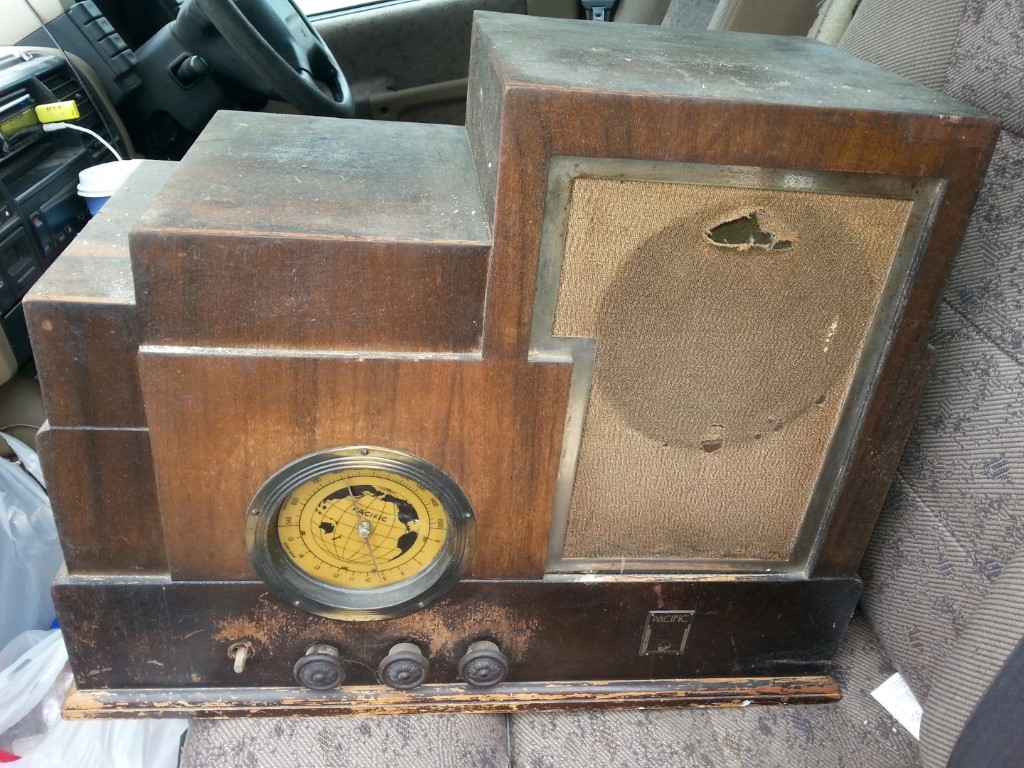
First - I don't think, given the volume of radios that Pacific sold and the quality of them that they would have sold this originally as a battery set. The speaker install is shonky to say the least, with very roughly gouged out timber to make it fit - and that coupled with the valve card... well, I'm just not buying it. I think someone has installed the 7B1 battery set chassis and speaker some time later... maybe it was a city radio that went to live on the farm and had a transplant for that role... until the farm got electricity and then it went for a retransplant - but instead of seeing a doctor they went to see a butcher.
Second - I have a possible schematic. This one uses 2.5V versions of the valves but otherwise seems very likely. I have a RCNZ chart which shows the 108 was the first 'aero-dial' chassis that Radio Corp of NZ made (in 1934). Given that a lot of other sets with RCNZ chassis' still had half-moon dials at that time and even in 1935 then this just seems to be the most likely option based on the options I have. All these valves are direct replacements for the lineup on the card - just lower filament voltages (from what I can tell) - so presumably the schematic would work if I just replaced the valve codes with 6D6 6A7 6D6 6B7 42...
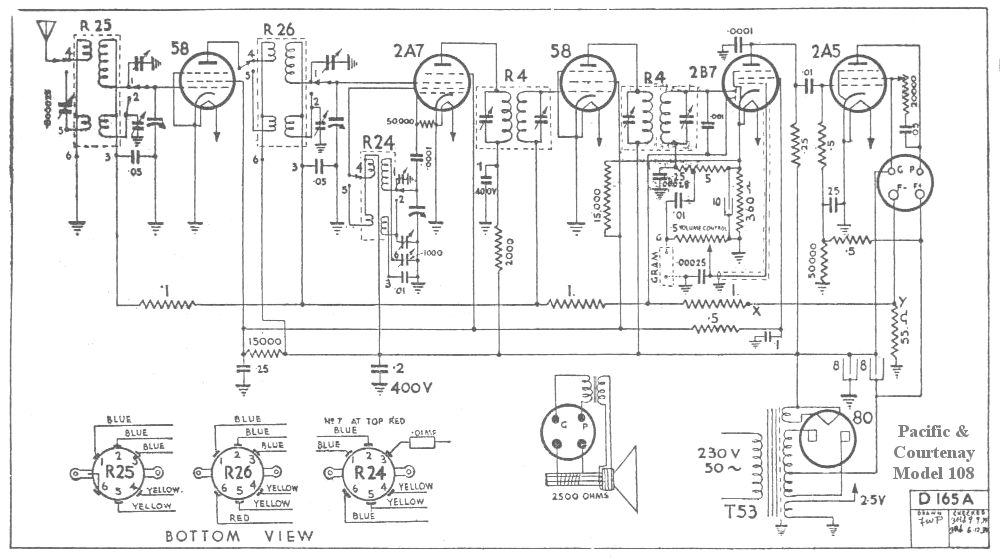
Third - I've found someone... well, not just someone but the actual owner of the Pacific Elite that caused a stir on the ARF when it went up for sale a few years back. For those who don't know - this is the Pacific Elite:
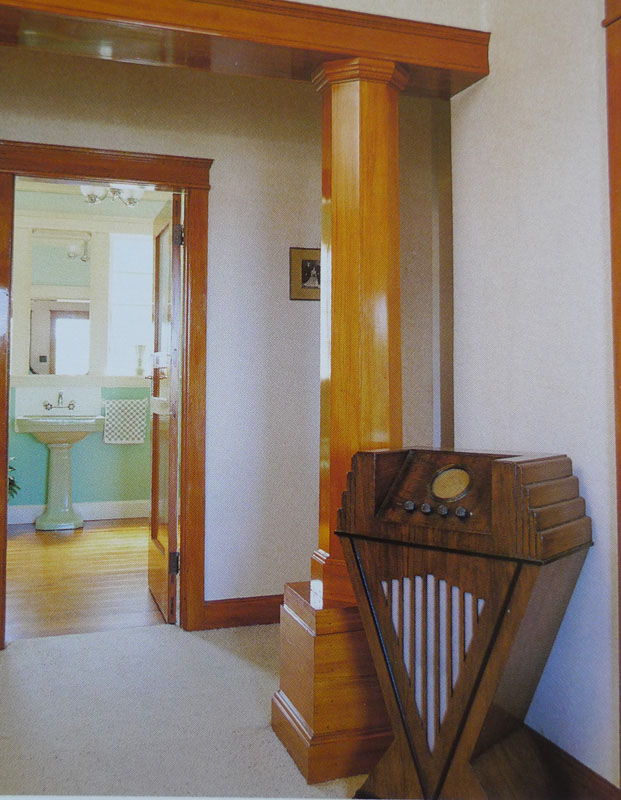
This is important because its the same year, same valve lineup, same dial, same knobs. 99.9% certain this is the same chassis that mine would have had. So I have a 'pattern'.
I was able to track down the owner of the one who's photos are used in the RadioMuseum listing for the Elite using a bit of sleuthing. He lives at the other end of the country but has said I'm welcome any time to come and check his one out and take photos, trace the schematic etc. Awesome. He's also provided me with a couple of photos which help.
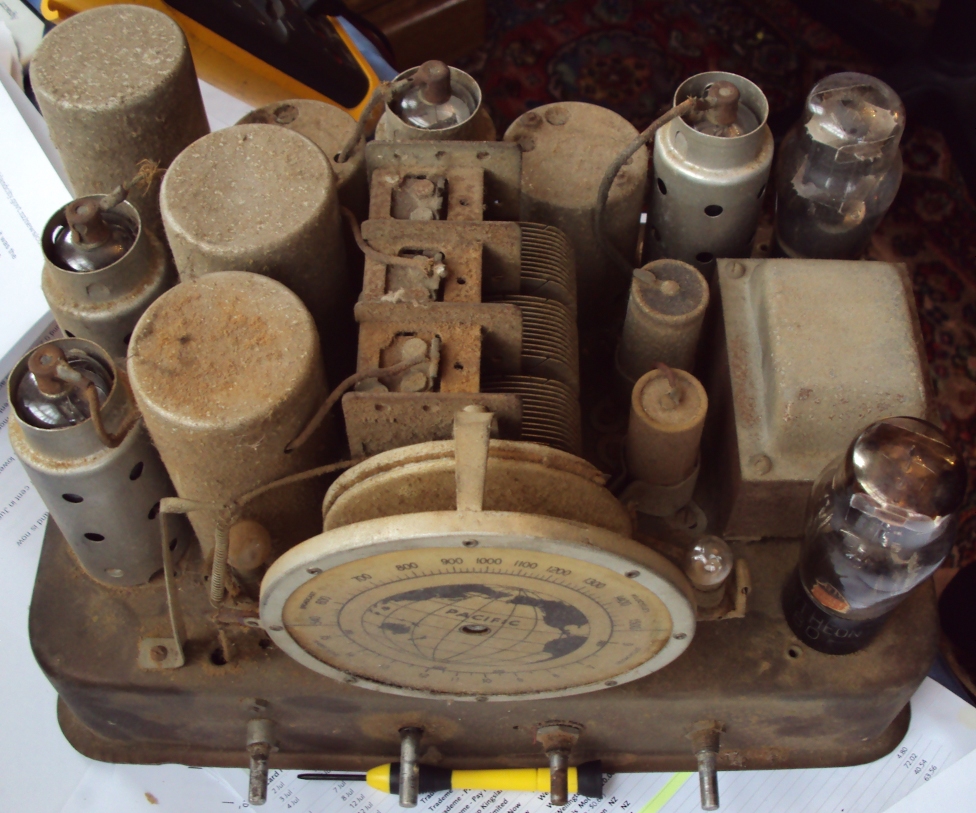
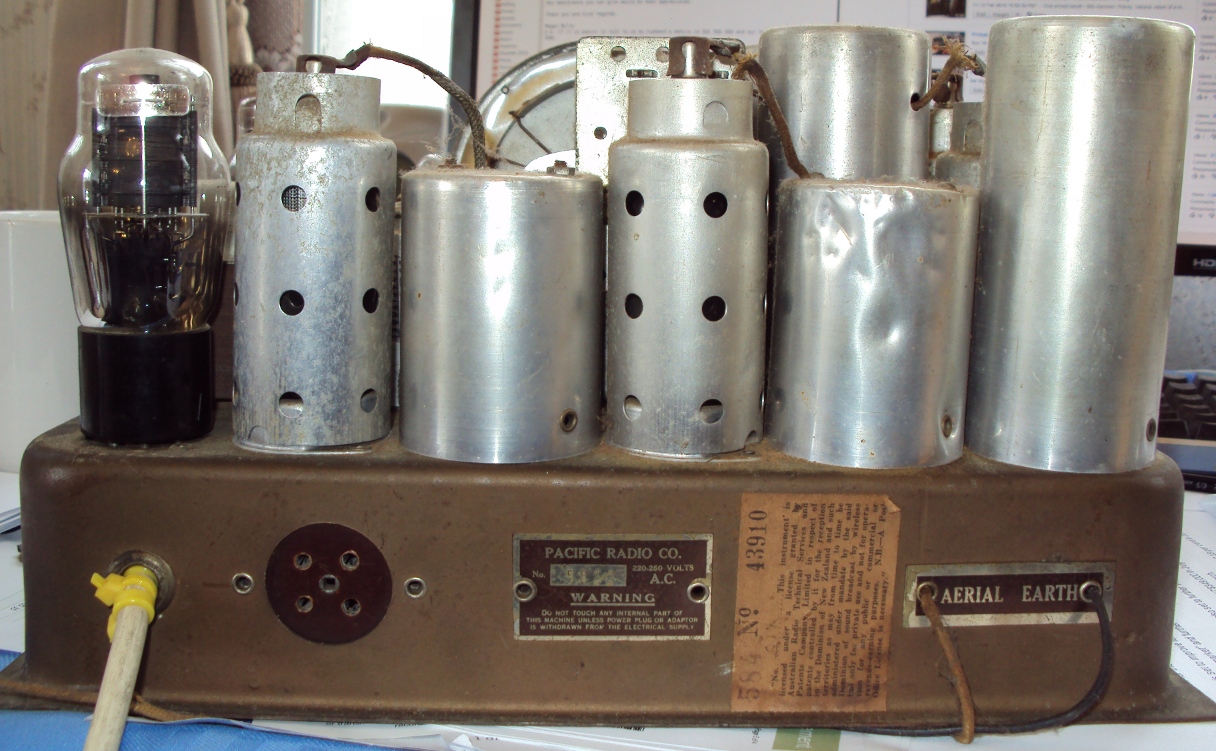
This tells me a few useful things:
- The badging I have on my chassis is for a battery set and is not the same as the mains set
- The dial light mechanism is different between battery and mains sets
- The valve shield bases are different to most RCNZ chassis' and look like the Philco ones that get mangled to fit metal valves in (what model do they come from? I wonder if they would be suitable donors).
- My battery set chassis will not do the job.
More to come... the ongoing saga continues...
There are no personal problems that can't be overcome with the liberal application of high explosives
Posts: 134
Threads: 11
Joined: Jul 2015
City: Christchurch, New Zealand
So I stripped out the chassis that was in my radio. It was horribly done... so I feel better now its beautifully undone. And I might build it one day if I can find 3 suitable IF cans and a P-P transformer to suit a 19 tube.
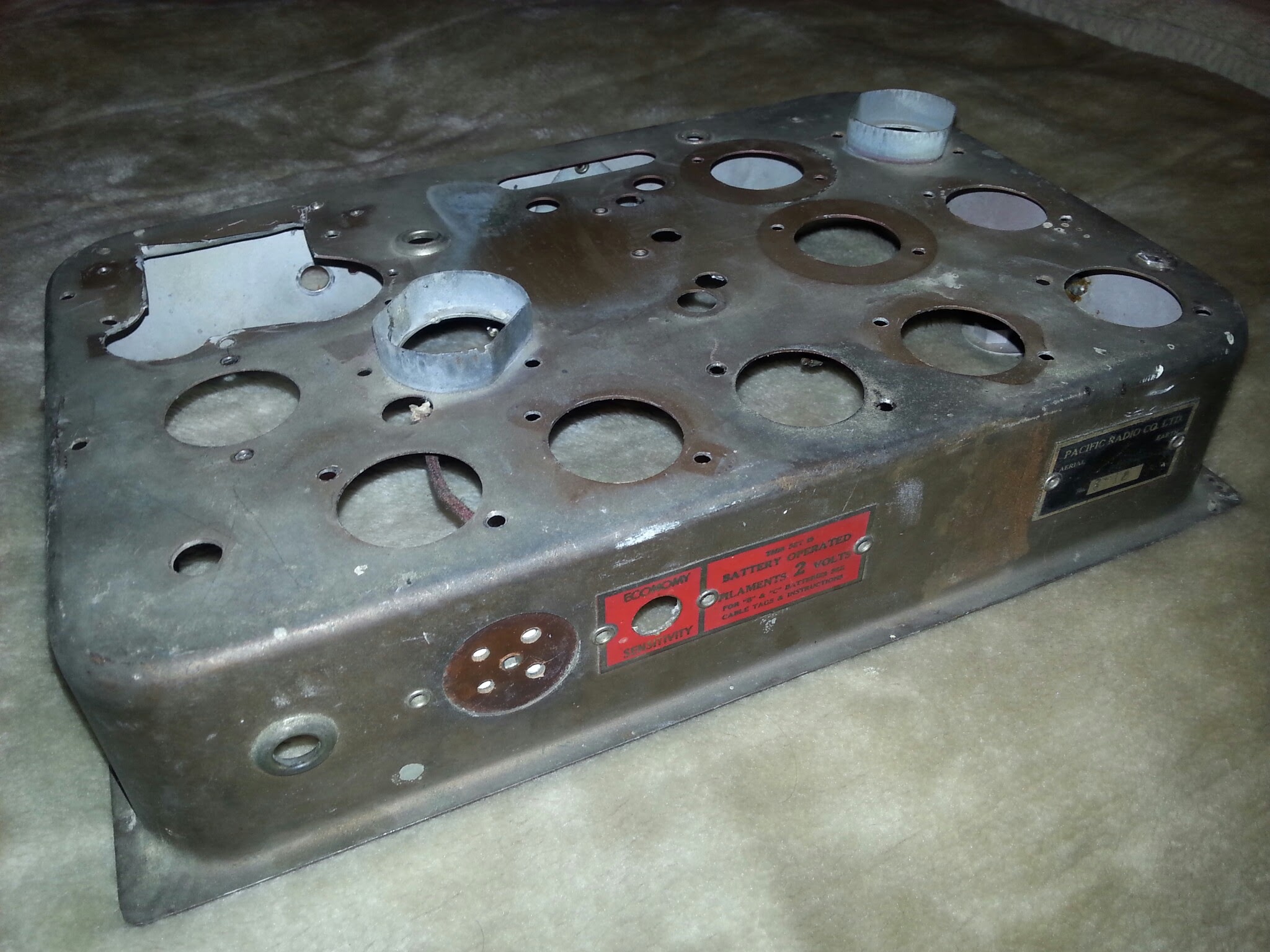
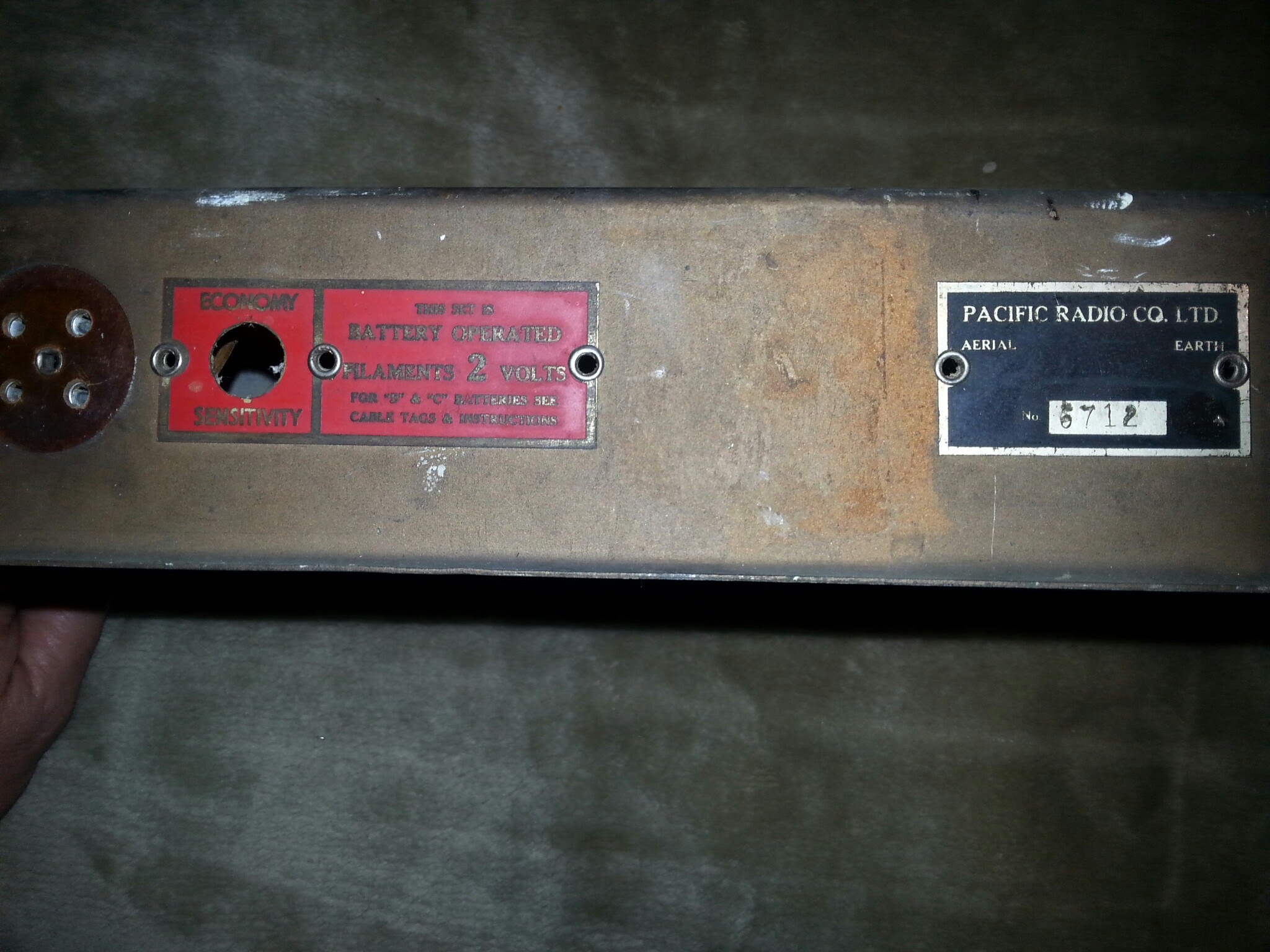
And I bought a can of automotive lacquer that matches the original paint (a metallic dark-ish gold), then tested it on the intended donor chassis (a RCNZ model 18 chassis - relatively common, from a junk radio with a near-destroyed cabinet).
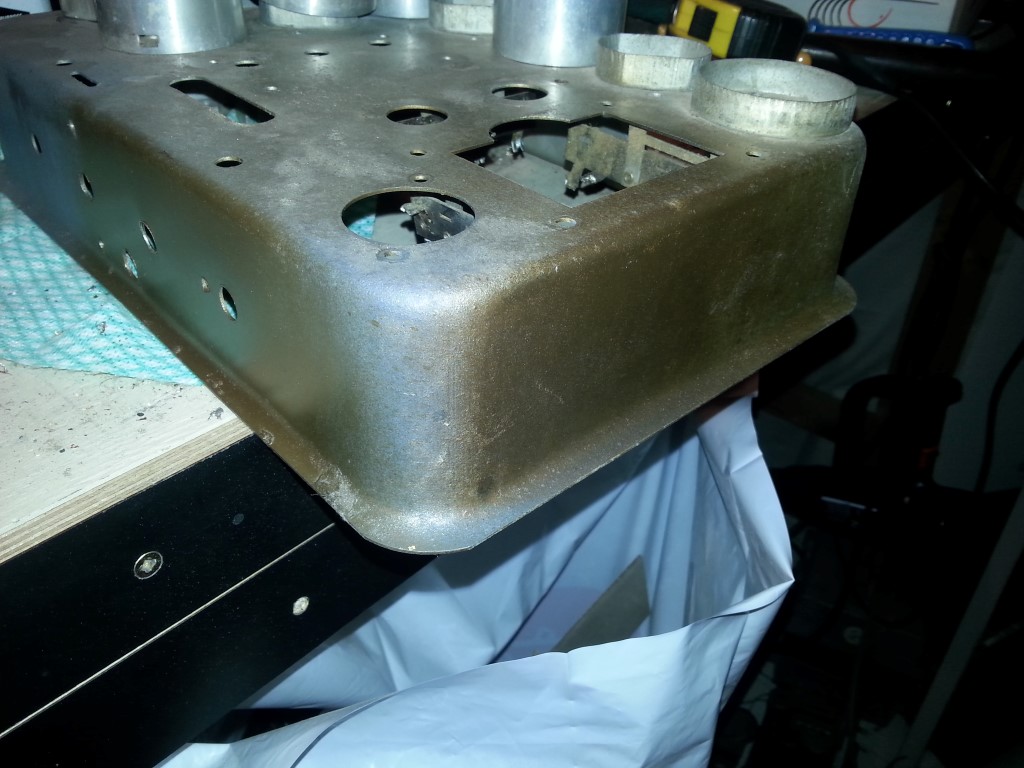
Then carefully prised the 4 spot welds apart to get the valve shield base from where the coil can needs to go, and tried the coils for fit
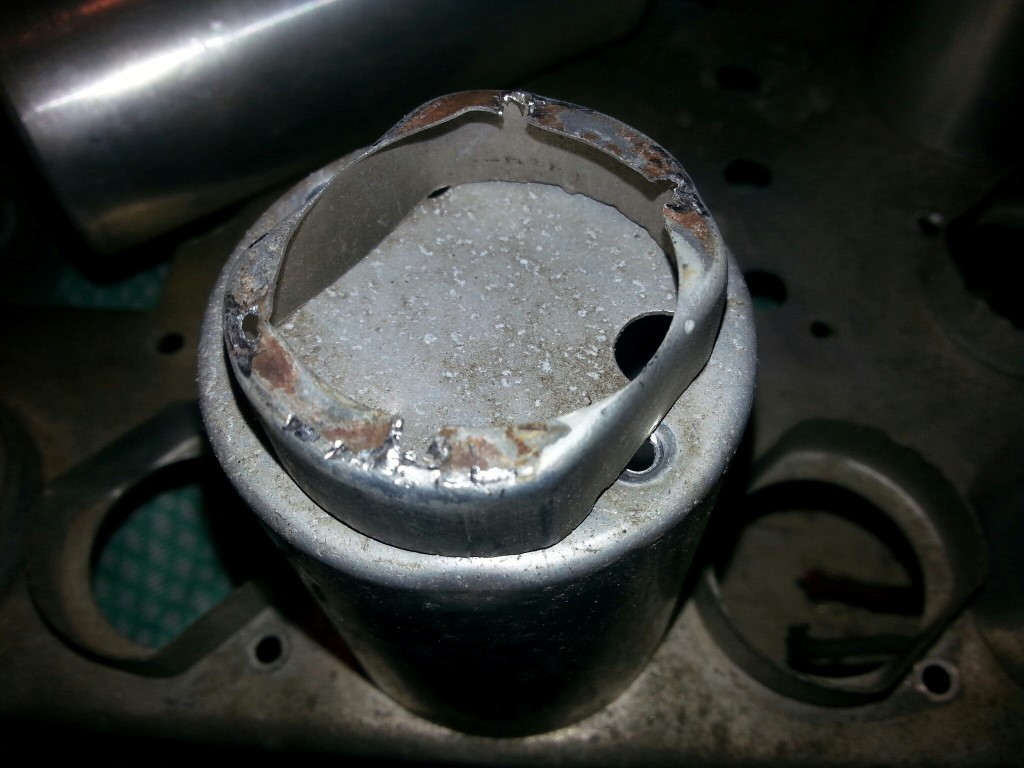
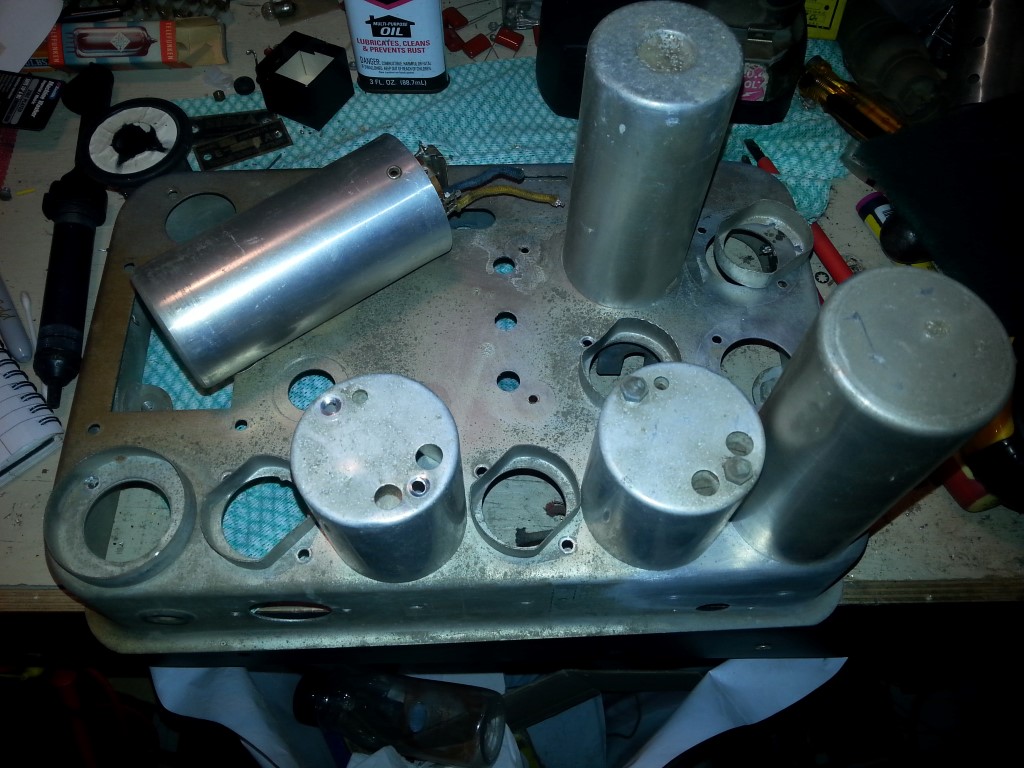
I'm using 2 old IF cans with the same layout as the originals that I got from an old parts chassis - they're too short but I might have some others I can use that are taller. I only have 2 coil cans that don't have dimples in the top though. Almost all RCNZ-made coil cans had a dimple in the top - but these Pacific ones did not. I'll have to ask around and see if I can find one more suitable can.
Thats about as far as I have managed to get at this point... but I'll keep you posted with progress.
There are no personal problems that can't be overcome with the liberal application of high explosives
Posts: 134
Threads: 11
Joined: Jul 2015
City: Christchurch, New Zealand
Oh, the model 18 donor chassis I'm using is cadmium plated so I'll be using an etch primer undercoat as well... but I'll wait until I get the chassis configured correctly before worrying about painting it.
One other thing I have done is try to duplicate the chassis badges.
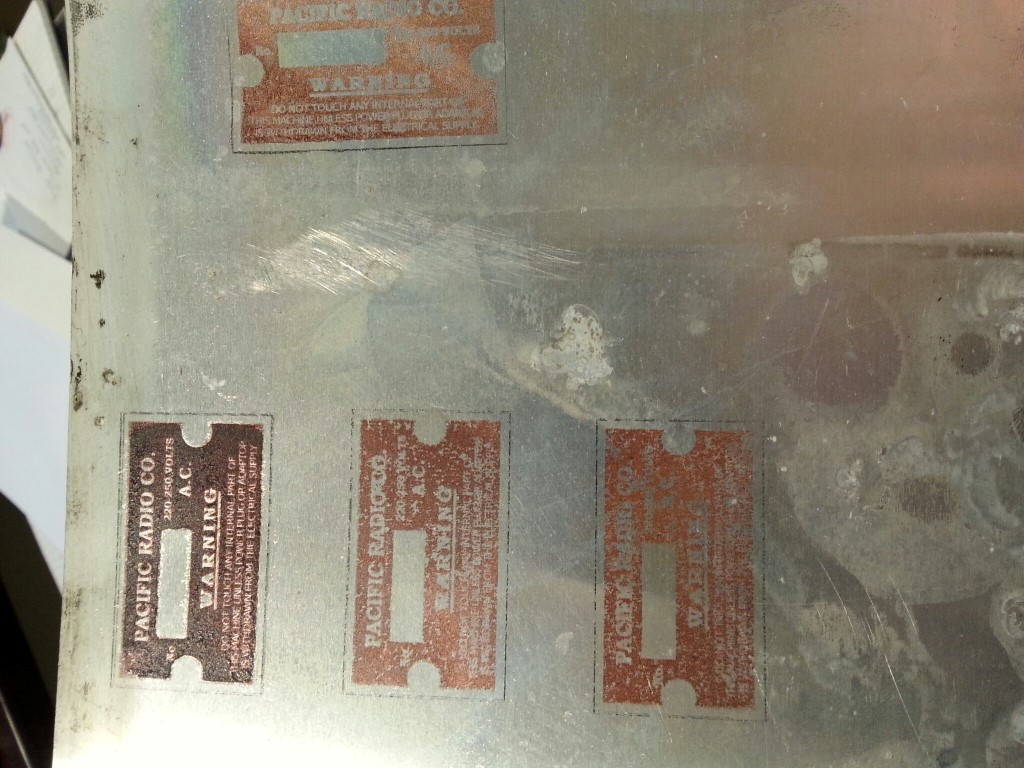
The best one was done by ironing a reversed colour laser print of the artwork (which I recreated in Inkscape) on to a thin piece of aluminium, then soaking in water and carefully rubbing the paper off... the others were done with various different acetone methods and didn't work that well. I'm still experimenting with this to try and get a good transfer.
There are no personal problems that can't be overcome with the liberal application of high explosives
Posts: 15,280
Threads: 531
Joined: Oct 2011
City: Jackson, NJ
Wow.....rough shape.
Lots of patience will it take (it's not me, it's Yoda in me speaking) 
People who do not drink, do not smoke, do not eat red meat will one day feel really stupid lying there and dying from nothing.
Users browsing this thread: 1 Guest(s)
|



